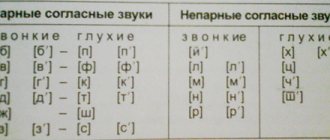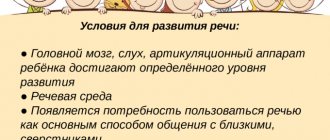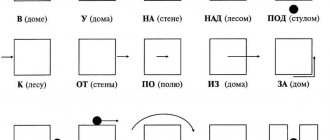Sigmatism is a deficiency in the pronunciation of hissing ([Zh], [Sh], [H], [Sh]) and whistling ([S-S′], [Z-Z′], [C]) phonemes. Both groups belong to the sounds of late ontogenesis, while hissing ones are considered articulatory more complex than whistling ones. Among speech sound defects, various variants of sigmatism are more common than other distortions. In older preschool children with dyslalia, whistling sigmatism is detected in 22% of cases, sibilant sigmatism - in 24%, in children with erased dysarthria - in 95% and 82%, respectively. Often, defective sound pronunciation persists in adults.
Causes of sigmatism
Sigmatism as a short-term phenomenon can occur in children during the period of physiological change of teeth. When baby teeth fall out, the tip of the tongue sometimes occupies an interdental position, which gives speech a lisping tone. Typically, children quickly find compensatory articulation that promotes normative pronunciation, and the problem soon disappears. Persistent pathological sigmatism has the following causes:
- Dentofacial anomalies.
Prognathia can lead to labiodental sigmatism. The cause of interdental pronunciation of sounds is usually an anterior open bite, a narrow and high hard palate, and a shortened frenulum of the tongue. Nasal pronunciation is typical for cleft palates. - Violation of the innervation of the organs of articulation.
Leads to changes in the tone of the tongue, laxity of the soft palate, paresis or increased spasticity of the lips. With innervation inferiority, interdental or lateral sigmatism most often occurs. - Diseases of the ENT organs.
Difficulty in nasal breathing caused by adenoids, vasomotor or allergic rhinitis causes the child’s mouth to constantly remain slightly open. In this case, the tip of the tongue ends up in an interdental position - interdental sigmatism is formed. - Incorrect articulation patterns.
There is no organic pathology on the part of the articulatory organs. The immaturity of articulatory praxis comes to the fore. This situation can occur in somatically weakened children when imitating incorrect speech patterns. - Hearing loss.
A decrease in physical hearing usually leads to sound substitutions - parasigmatism; less often, with hearing loss, distorted pronunciation of sounds is observed. It is caused by unclear auditory differentiation of correctly and incorrectly pronounced phonemes.
In practical speech therapy, sigmatism occurs in a number of speech disorders: various forms of dyslalia and dysarthria, alalia, rhinolalia, ONR, FFN. A lisp may occur in children with intellectual disabilities.
Phonetic characteristics of whistling and hissing sounds
Whistling [S], [Z] and hissing [Sh], [Zh], [Sh] - consonants, oral, anterior lingual, fricative. Of these, [Z] and [Zh] are voiced (during phonation, the vocal folds vibrate, producing a voice), the rest are voiceless. Whistling [C] and hissing [Ch] differ only in the method of formation - they are occlusive-fissional. [H] and [Sh] are always soft, [C], [Sh], [F] are always hard, [S], [Z] - have soft pairs [S′] and [Z′]. An important difference between the group of whistlers and hissers is the basic articulatory structure, including:
- position of the lips: when pronouncing sibilants, the lips are stretched in a smile, when pronouncing hissing ones, they are rounded and slightly extended forward;
- position and shape of the tongue: when articulating sibilants, the tongue is located “mound” behind the lower incisors, when articulating sibilants - at the alveoli in the shape of a “cup”;
- characteristics of the air stream: for those who whistle, it is narrow and cold; for the sizzling ones, it is wide and warm.
Types of sigmatism
All forms of sigmatism are divided into two large groups: hissing sigmatism and whistling sigmatism. The methods for correcting defective sound pronunciation depend on the nature of the distortion of sounds. The main types of sigmatism in both groups of sounds are identical:
- Interdental.
The tip of the tongue takes a position between the upper and lower incisors. Phonemes acquire a lisping sound. - Prizubny.
The tongue rests against the edges of the incisors, blocking the passage of air through the interdental gap. The sound produced is acoustically close to [T]. - Labial-dental.
The lower lip comes closer to the upper teeth, the air comes out in a jerky manner. Instead of the correct sound, a distorted [F] or [V] is heard. - Side.
The exhaled air stream exits through a one-sided slit or along both lateral edges of the tongue. The sound is noisy and squelching. - Nasal.
During phonation, air does not come out through the mouth, but through the nasal cavity. Because of this, the sound has a snoring sound with a nasal tint.
In addition, hissing [Sh], [Zh] may have other types of distortion that are characteristic only of them:
- lower
- the tongue is lowered behind the lower incisors, hissing sounds are pronounced softly; - buccal
- the air stream goes into the cheeks, causing them to swell, instead of sound a noise is heard; - posterior lingual
- air passes between the hard palate and the back of the back of the tongue, a “hunting” or “whooping” is heard, reminiscent of the southern Russian dialect.
What is a speech disorder
All articulation deficiencies are systematized depending on the violation of the pronunciation of a certain group of speech sounds. There are seven in total:
- rhotacism - distortion of sounds [р] and [р'];
- lambdacism - [l] and [l'];
- sigmatism - [zh], [w], [h], [sch], as well as [s]-[s'] and [z]-[z'];
- iotacism - [th];
- kappacism - distortion of the posterior palatal sounds [k]-[k'], [g]-[g'], [x]-[x'];
- gammacism - [g] and [g'];
- hitism - [x] and [x'].
As can be seen from the above list, sigmatism is the most extensive group. This is due to the proximity of the patterns of the listed sounds during pronunciation. Thus, the patterns of sounds [s]-[z] and [sh]-[zh] are the same (they differ only in the presence of voice in a voiced consonant).
Diagnostics
To identify sigmatism, determine its form and causes, a speech therapy examination is carried out. It is also important to understand which speech disorder is manifested by sound distortion. During the diagnosis, the speech therapist examines the medical and speech history, then proceeds to an objective examination:
- Articulatory organs.
The oral organs are examined, the tone of the facial and articulatory muscles, and the state of oral praxis are assessed. If anomalies of the maxillofacial area or muscle tone disorders are detected, a preliminary speech diagnosis is established. If necessary, a referral to a consultation with an orthodontist or neurologist is issued. - Speech hearing.
The differentiation of sounds is checked when they are pronounced in isolation, in syllables, words, phrases. For this purpose, special picture and speech material is used that corresponds to the age and intelligence of the speech pathologist. Special didactic techniques are used to distinguish between different types of sigmatism and parasigmatism. - States of sound pronunciation.
It is carried out to identify all defects in sound pronunciation (both phonetic and phonemic), the number of disturbed sounds. With hissing and whistling defects, the type of sigmatism is established. After this, the sequence of correction work is determined.
If a child is suspected of having a systemic speech disorder, examination of the lexical and grammatical aspects of speech is mandatory. If hearing loss is suspected, it is advisable to refer the patient to an otolaryngologist to check the state of hearing function.
Exercise “Calyx” - basic for making hissing sounds
Possible associated developmental disorders
Interdental sigmatism can be a symptom of such developmental disorders as open bite and other abnormal forms of development of the speech apparatus, enlarged adenoids, hypotonia of the speech muscles (this is how dysarthria manifests itself). In all of these cases, the cause of the speech defect should be eliminated together with correctional work by a speech therapist. If you ignore diseases, you may not see the results of speech therapy work.
If an orthodontist helps correct problems in the development of the dental system (with the help of plates and special simulators), then a psychiatrist deals with the treatment of dysarthria, which often frightens parents. In practice, the identified dysarthria at the age of three does not manifest itself in any way by the age of seven, provided proper treatment and timely correctional assistance are provided to the child.
Interdental sigmatism is often a concomitant developmental disorder in diseases such as cerebral palsy, intellectual disability, deafness, and blindness. In these cases, everything depends on the degree of complexity of the underlying disease (the more complex the form, the less opportunities for correction) and the preservation of intelligence. Speech correction for such children lasts for many years and reaches a satisfactory level as much as possible.
Correction
Health care
Special treatment is required to eliminate factors predisposing to sigmatism. Bite correction may include various types of orthodontic care: wearing braces, special mouth guards, and devices of various types. If necessary, orthognathic intervention is performed. The choice in favor of surgical tactics for a shortened frenulum is made if it is impossible to stretch the ligament using speech therapy methods.
In case of disturbances in the innervation of the articulatory muscles, all speech therapy work is carried out against the background of drug treatment and physiotherapy prescribed by a neurologist. The lack of free nasal breathing, as a cause of sigmatism, requires appropriate treatment: removal of the adenoids, antiallergic therapy.
Speech therapy correction
Speech therapy work to eliminate all forms of sigmatism is subject to a single algorithm. It includes three periods during which certain corrective tasks are solved:
- Preparatory.
At this stage, the necessary articulation patterns are formed: the correct position of the lips and tongue. Work is underway to develop the strength and direction of the air stream. Support sounds are practiced ([I], [F] - for [S], [T], [S] - for [Sh]. Methods by which the objectives are achieved include articulation and breathing exercises, and, if indicated, speech therapy massage . - Sound production.
It is carried out in different ways: by imitation (“how a pump whistles”, “like a mosquito rings”, “like a snake hisses”), using articulation exercises or with the help of instruments (probe substitutes, probes). The basic sound for all whistling sounds is [S], and for other hissing sounds - [Ш]. - Automation.
Having achieved the correct pronunciation of an isolated sound, they move on to consolidating it, sequentially introducing syllables (direct, reverse, with a combination of consonants), words, phrases and spontaneous speech. After practicing hard sounds, they begin to assimilate their soft pairs. There is no differentiation stage for sigmatism and other sound distortions.
The traditional sequence of production of sounds is determined by the timing of their appearance in ontogenesis. If both groups are violated, the sound production of whistling sounds is carried out first, then hissing sounds (an exception may be dysarthria, when the sounds are placed in the reverse order).
If sigmatism is part of a complex speech defect, then work is carried out in parallel on other aspects of speech: syllable structure, vocabulary, grammar, prosody, etc. The time frame for correcting sigmatism may vary for different children; the period of speech therapy work takes up to 45-90 days or more.
Stages of introducing sound into speech
Automation of any sounds follows approximately the same plan, adhering to the principle “from simple to complex.” The introduction of sounds into speech with interdental whistling sigmatism occurs as follows.
Sound automation:
- in straight syllables (for example, –sa, -so);
- in reverse syllables (–as, -os);
- in syllables of intervocalic position (–asa, -oso);
- in syllables with a combination of consonants (–stra, -arst);
- at the beginning of the word (son, catfish);
- at the end of a word (bite, ramp);
- in the middle of a word (wasp, mustache);
- in words with a combination of consonants (construction, mouth);
- in words and sentences (sauce; the plum garden turned blue);
- in proverbs and tongue twisters;
- in words of complex syllabic construction (nalistniki, accomplice).
It should be noted that the role of parents at this stage is only increasing. To automate sound as quickly as possible, it is very important not to weaken auditory control even for a minute, and this can only be done with the support of significant adults.
Sound correction is carried out at a pace convenient for the child. Some points can take up to ten lessons, and some sound positions can be automated in a couple of lessons.
With interdental sigmatism of hissing sounds, all stages of working with whistling sounds are repeated, with the only difference being that the production of the sound will be carried out based on the anatomical structure of the child’s speech apparatus and the complexity of the manifestation of the disorder.









